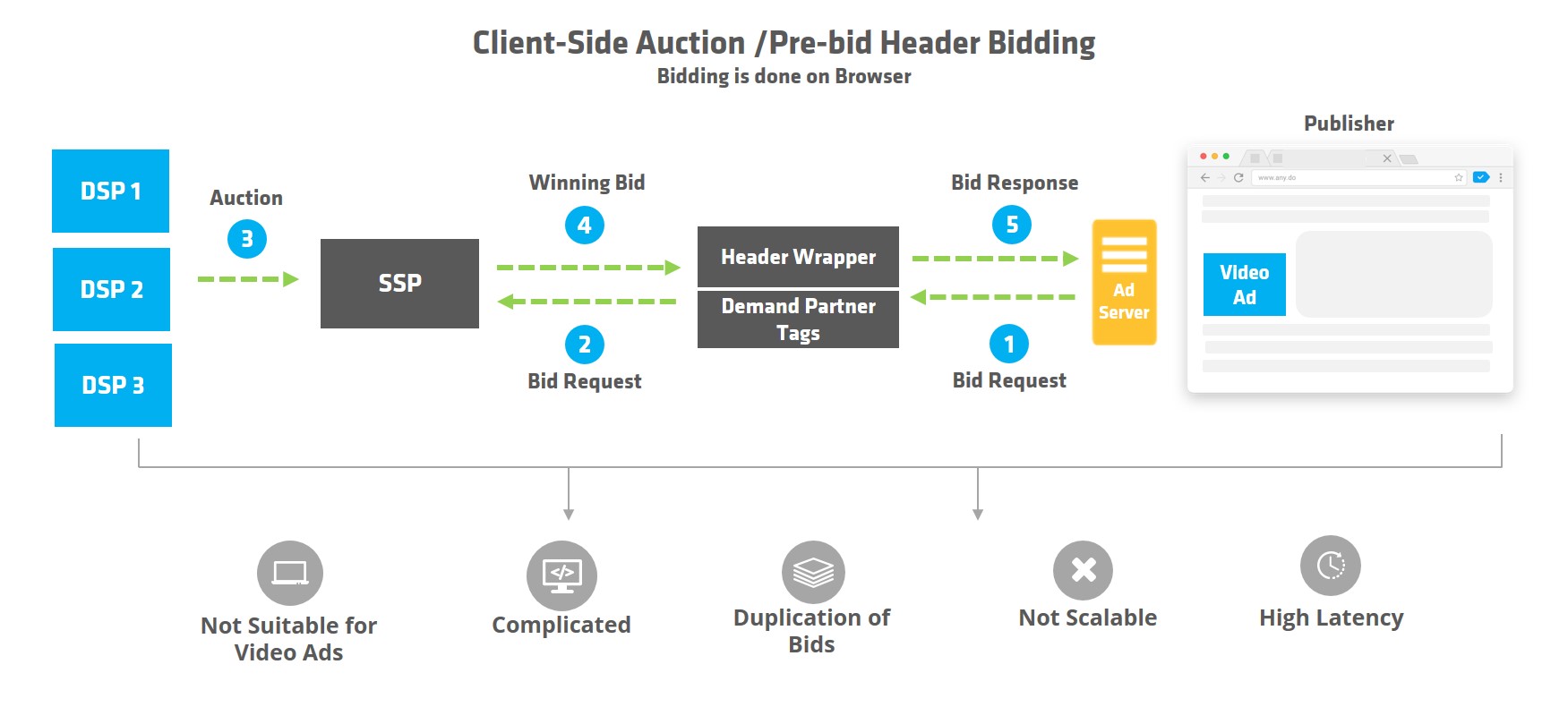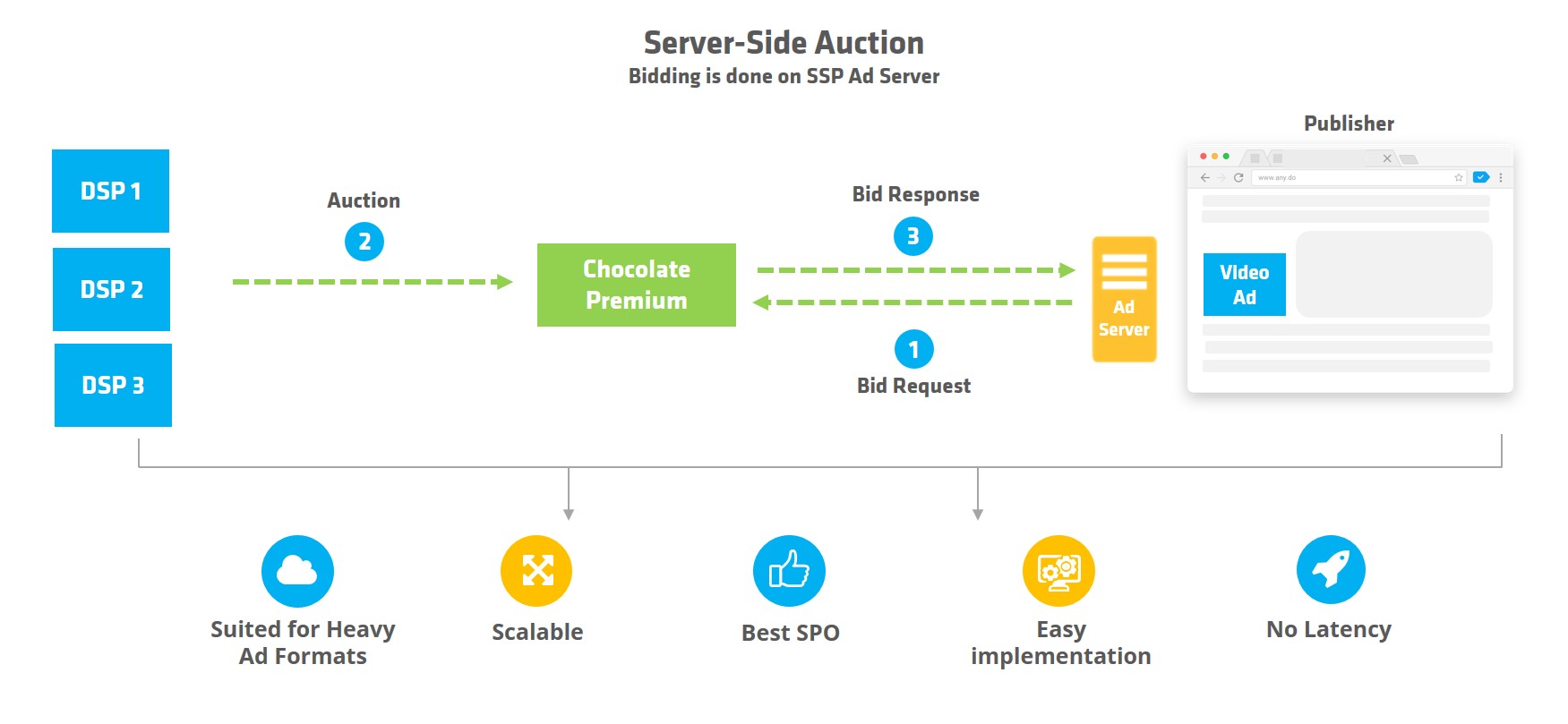Looking ahead to the future of programmatic advertising, server-side auctions hold the potential to disrupt how programmatic video advertising is traded today. In this article, we take a detailed look into both client-side and server-side auction mechanisms and observe how server-side auction offers more value to programmatic buyers when it comes to video advertising.
Client-Side Auction

In a client-side header bidding entire auction is conducted on user’s browser, thus it is also known as browser-side header bidding. It involves a header bidding wrapper (Javascript) that consists of multiple tags of different demand partners. Every time page loads, the ad request is sent by the user’s browser in real-time to multiple demand partners. DSP’s then send bids and the highest bidder wins the auction.
- Latency: Conducting auctions on user’s browser significantly increases page load time and hence the latency. With every new demand partner tag added to header bidding wrapper, the page load time increases by few milliseconds
- Not Suitable for Video Ads: Video files take more time to load on web pages. With so many bid requests happening simultaneously on the user’s browser, it may cause serious damage to the user experience when used with client-side.
- Complicated: Implementing client-side header bidding wrapper involves adding multiple scripts in the page header. With so many different demand partner adapters, the implementation is complex and raises compatibility issues in a few browsers
- Duplication of Bids: If a publisher has multiple header wrappers, a single exchange is integrated multiple times – once per wrapper. This leads to a single exchange issuing multiple bid requests for the same impression
- Not Scalable: Browsers have a limit on the number of requests they can send at one time. Since in client-side bidding, requests are sent from a browser only a limited number of demand partners can participate
Server-side Auction

In a server-side header bidding entire auction takes place in a server instead of the user’s browser. It involves sending just one bid request every time the page loads to the ad server which then sends bid requests to all demand partners. Winning bid is returned to publisher’s ad server and subsequently, the ad is displayed.
- No Latency: Since all auctions are conducted in a server, the user’s browser is unaffected which reduces the page load time considerably and improves overall latency.
- Suited for Heavy Ad formats like Video: Video bidding is managed over a server and has no impact on web page load time. Additionally, all major OTT advertising is done server-to-server since there is no open-ended webpage ecosystem.
- Scalable: Unlike browsers, there are no limits on the number of ad requests sent by the ad server. Publishers can add any number of demand partner as they wish and buyers get more inventory to bid on.
- Best SPO: Server-side auction involves minimum hassle and steps for buyers to reach their desired audience. Since all auctions are happening on the server, latency is controlled, there are no complex wrappers to navigate.
- Future of Programmatic: A majority of leading publishers are allocating a chunk of video inventory to server-side header bidding considering the latency & scalability benefits.
This article was originally published on MarTech Series

